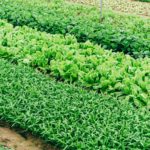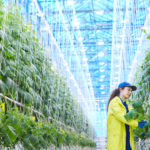Technology has been transforming the farm for generations. Centuries even.
It took a while to get here, though.
Prior to the 18th century, agriculture was almost exclusively a manual effort, as it always had been. Crude wooden plows were strapped to oxen and horses, seeds were sown by hand, cultivation was done by hoe and harvests, when it came time, were gathered by manual labor. This was then, as now, sweaty, backbreaking work often done under the hot sun for weeks at a time.
It’s no surprise that so much early innovation was focused on making life easier for the agricultural industry and easing the strain of farm labor.
After all, we needed them to survive. We also needed them to scale in order to support the rapidly-growing population at the time.
From the grain cradle, which added a set of sorting fingers to the standard scythe in order to keep cut grain stems aligned in the field for collection and efficient threshing; to the mechanical cotton gin, which quickly and easily separates cotton seeds and fibers; to Thomas Jefferson’s moldboard of least resistance, a plow design that combined wooden and metal components; to the full cast iron plow, that lasts far longer and performs better than a wooden plow; the history of agriculture has been a history of innovation. The development of the grain elevator allowed farmers to store their products safely for longer periods of time. Steam power brought new machines to the field, including powered plows and harvesters. And, of course, the introduction of the internal combustion led to the development of powered tractors, mowers and more.
The gas-powered tractor revolutionized farming when it was first introduced for agricultural use in the early 20th century, allowing farmers to do more, faster, and scale their operations up to meet the growing demand of postwar America. Improvements continued over the decades, but farm implements have remained largely as they’ve always been: dependent on human operators to do their work and help streamline the farm.
That is changing. Fast.
Today, the farm is a vastly different place than it was just a generation ago.
Farmers are able to drive massive powered combine harvesters through their fields, performing three tasks — reaping, threshing, and winnowing – in a single pass, without any manual labor at all.
Rather than milk hundreds of cows by hand every day, dairy farmers now utilize vast automated milking machines to care for their cattle at scale without having to hire new workers.
It’s easier, it’s less taxing on the body, and it scales far more than the traditional farm ever could.
But innovation farm labor is far from over. Here are a few trends in the space that we’re watching.
Automation
Imagine what a fully-autonomous farm could accomplish. Fleets of combines and tractors, roaming the fields all day and all night, planting seeds, tending to crops and eventually harvesting the end result. They could even package crops up for market and handle transportation after the fact.
It might sound futuristic, but we at least halfway there already. Farmers are already planting, weeding and harvesting crops on the backs of massive, complex machines, and these machines are about to get a lot smarter. Guided by GPS satellites, self-driving technology and advanced guidance sensors, the new generation of smart farm tech is all about making life easier for the farmer, effectively taking farm labor out of the equation, cutting down on labor costs, enabling operators to scale and maximizing field efficiencies.
Robotics
Who drives the farm implements of the future? Robots, of course.
When coupled with self-driving technology for tractors and implements, robots will close the circles on the automated farm, helping to both cut down on the cost of operation while simultaneously reducing labor needs. Robotic technology can handle everything from route planning, job scheduling, and real-time control, returning up to 75% of existing tractor-driving labor costs to growers and exponentially multiply in-field productivity.
The fact is, this was just a matter of time. Robotic technology is changing the world, finding applications in a wide range of industries from manufacturing, to agriculture, to medicine and more. But these machines are not as well integrated into the economy as they can be, in part because they don’t yet have the motor skills and dexterity to handle delicate tasks. That is changing, though — robots that can carefully pick delicate fruits and berries, for instance — and is set to be a major force in the industry.
Big Data
Farmers are becoming knowledge workers. Gone are the days of migrant labor and harsh conditions. With robots do the manual labor, Roomba-like devices wander the fields overnight killing weeds, fertilizer maps ensuring that everything is precisely placed. At harvest, automated carts will gather grain.
In truth, data is everywhere on the farm. It’s in the weather cycles that farmers track from year to year that informs their planting schedule. It’s in the plot by plot performance of every inch of the field, where certain crops do better than others. It’s in the fertilizer plans that dictate where pesticides, herbicides and other additives are placed and when.
With hyper-specific data and radically streamlined supply chains, the farmer will soon be able to match crop, supply, and production near perfectly with the demands of a range of consumers. Free-flowing and open source data will enable optimization and limit volatility, extending “the perfect farm” into “the perfect supply chain.”
August Agrifood Conversations: Labor and Machinery
During 2018, iSelect, The Van Trump Report and The Yield Lab Institute are sponsoring a series of weekly webinars featuring the best in agriculture innovation. Agrifood Conversations is all about driving innovation and each month will highlight a specific theme, from biologicals to vertical farms, featuring new and exciting companies at the forefront of the industry.
This month Agrifood Conversations will feature webinars from agriculture labor and machinery companies.












